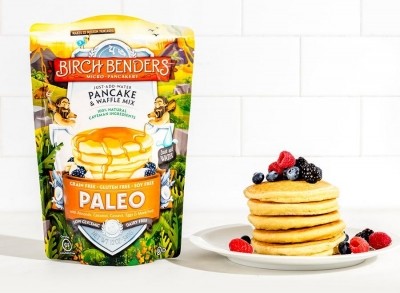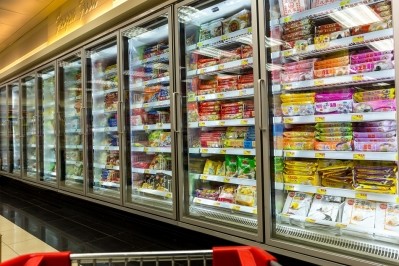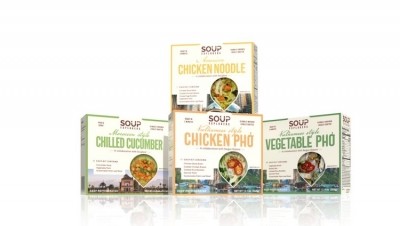From scratch cooking to home baking: What coronavirus-fueled trends could linger post-pandemic?

According to a small survey of 300 US consumers conducted in early April by market researcher AMC Global and OpinionRoute:
“After the pandemic is considered over, 38% of consumers say that they will support local businesses more in the future, 32% say they plan on making more home cooked meals, and 35% say they will spend more time with family.”
A third of respondents said they were baking more than usual during the pandemic, with 20% predicting they would continue to bake more in future.
A similar pattern emerged for online grocery shopping: “52% of consumers are currently increasing online grocery shopping, but expect to go back to shopping in-store after, with 25% seeing online grocery shopping as a continued behavior.
Meanwhile, “37% are shifting toward more saving and budgeting during the pandemic, with a predicted 40% shift toward more saving and budgeting after the pandemic is considered over.”
As for taking vitamins and supplements, around a quarter of respondents said they were taking more during the pandemic than usual, behavior they expected to continue.
Bernstein does ‘not expect a resurgence in many of the shelf-stable, heavily processed packaged food categories’ post pandemic
Analysts at Bernstein – who conducted a larger survey of 1,052 US consumers on April 2 – also found that “health & wellness remains or has become a more important consideration for people when they shop for food…”
And while some major packaged food companies clearly stand to gain in the short term as consumption shifts towards the home, “We do not expect people to significantly increase their consumption of heavily processed foods after the pandemic,” said Bernstein in an April 9 report.
“In fact, most consumers look to eat more vegetables, fruit, and fresh foods going forward. Frozen food and vegetables may also benefit from increased trial during the pandemic… Our survey respondents look to reduce their consumption of processed food with high carbs, salt, fat, and sugar, which does not bode well for US food companies that are exposed to heavily processed categories such as canned soup and cereal.”
‘A number of respondents expect to eat more plant-based food’
Bernstein added: “Meanwhile, a number of respondents expect to eat more plant-based food, which could support the growth of the category, although the high price tag could remain a hurdle especially during a recession.
“Almost 30% of respondents say they have started to eat more healthily and intend to continue, with 38% looking for real food with simple ingredients, 35% caring about general wellbeing, 33% looking to lose weight, and 21% looking to manage existing health conditions.”
In general, said Bernstein: “Most consumers expect to eat more healthy and fresh foods such as fruits and vegetables after the pandemic. Some also highlighted frozen foods and vegetables, which could be positive for Conagra Foods as COVID-19 has introduced more trial in the frozen category.”
That said, “about 24% of consumers have increased their consumption of indulgent snacks, led by younger consumers under 30.”
‘We do not expect a resurgence in many of the shelf-stable, heavily processed packaged food categories such as canned soup’
As for the comeback of ‘Big Food,’ said Bernstein: “We do not expect a resurgence in many of the shelf-stable, heavily processed packaged food categories such as canned soup. In fact, most consumers have stocked up on canned foods just in case and have not consumed as much, which implies that companies like Campbell Soup could experience some headwinds from pantry de-loading.”
Since the coronavirus outbreak began, about 60% of survey respondents have been cooking more from scratch, while 28% have been eating more pre-prepared meals at home (e.g., frozen meals, mac & cheese, canned soup, frozen pizza), said Bernstein.
As for shopping channels, about 60% of respondents have continued to shop for groceries in store, although they have been buying more on each trip to reduce the number of trips they have to make, said the report.
Increase in online purchasing for home delivery ‘led by higher income households’
Around 14% have been buying more food online for pick up in store and about 11% have been buying more food online for home delivery, a trend “led by higher income households,” added Bernstein.
“This may not bode well for the growth of online grocery delivery if we are heading into a prolonged recession as consumers have a tighter budget for food, although the pandemic could drive further growth of the click-and-collect model which is more cost effective.”
Amazon and Whole Foods:
In an April 12 update, Amazon/Whole Foods told customers:
- "In the last several weeks, we have expanded Whole Foods Market grocery pickup from roughly 80 stores to more than 150, and we will continue to quickly expand grocery pickup in the coming weeks.
- Since March 16, we’ve hired more than 100,000 people, including for grocery delivery, to help meet demand.
- We will adjust store hours for select Whole Foods locations to focus exclusively on fulfilling online grocery orders.
- We are temporarily asking new Amazon Fresh and Whole Foods Market delivery and pickup customers to sign up for an invitation to use online grocery delivery and pickup. We are releasing delivery windows throughout the day and have made it easier for customers to see when the next delivery window is available by including it on the homepages of Amazon Fresh and Whole Foods Market.
- In partnership with the USDA, we have expanded online access to SNAP food assistance benefits in multiple states including Alabama, Iowa, Nebraska, New York, Oregon, and Washington, and are working with them on further expansions."
Total US CPG online sales: +41.7% YoY in week ending 4/4/20
Online department breakdown
- Food: +79.8%
- Household care: +49.8%
- Health and beauty care: +22%
- Pet care: +4.8%
- Baby care: -5.7%
Total US CPG in-store sales: +15.8% YoY in week ending 4/4/20
Top movers of the week in-store
- Spiral hams: +424.4%
- Baking yeast: +302.5%
- Oat milk: +296.9%
- Baking powder: +162.3%
- Bulk doughnuts:
- Vegetable party platters: -54.1%
Source: Nielsen
RESTAURANT TRANSACTIONS: Week ending April 5
Quick service restaurants, which historically have more off-premise business than full service restaurants, experienced lower transaction declines (-38%) in the week to April 5 than total industry (-41%), according to the NPD Group, which provides a weekly view of chain-specific transactions and share trends for 70 quick service, fast casual, midscale, and casual dining chains. Full service restaurants, which were already challenged prior to the COVID-19 outbreak, experienced transaction declines of 79%.
“The 41% decline in restaurant transactions is similar to last week and may indicate a bottom, we also need to be aware that further erosion could occur if consumers’ economic situations worsen,” said NPD food industry advisor David Portalain.
“To date, many consumers have continued to buy restaurant meals through delivery, takeout, and drive-thru to the degree allowed by the restrictive environment; but with rising unemployment, payroll reductions, and temporary furloughs, consumers may begin to think differently about their food budgets overall.”


















